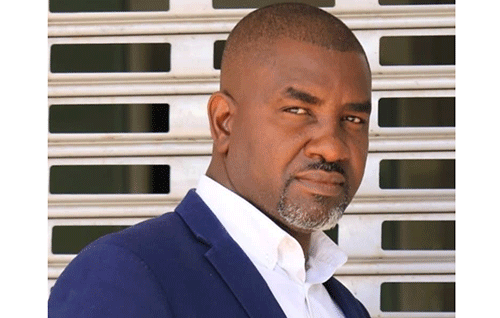Kuku Helvi Mpingana Kondombolo (1898-2008), affectionately known as Kuku Gwakondo, was the mother of the Namibian Founding President, the late Dr. Sam Nujoma (1929-2025). Often, we hear Kuku Gwakondo’s father is Kondombolo ka Nakathingo; Nakathingo ja Kambulua; Kambulua ka Hango.
However, have you ever wondered who the mother of the Uukwambi princess (Gwakondo) was? Where did she come from?
In a surprising twist of history unveiled in the wake of the untimely death of Tate Nujoma, the grandmother of Gwakondo, only known as Kuku Naango (Matrilineage: Omukuejuva uoKatenda) is buried at a village known as Otjitoko, South-West of Kunene region in the great Kaokoland.
Surprised? The village Otjitoko is to this day affectionately known as Osheendjenda dha Naango (Village of the Nomads of Naango), named after her. In Oshindonga, the name Naango comes from the word Nahango, which means “one who was born during a wedding.” It is normal to find an Oshiwambo name in traditional Ovaherero people of Kaokoland, as history reveals that Ovaherero and Aawambo people are akin and this is reflected in their languages, which are also quite similar.
Naango from the Ovatjimba tribe of Kaokoland is believed to have originated from a village known as Etanga about 109 kilometres west of Opuwo and migrated to Otjitoko, located about 65 kilometres south of Opuwo. We could not establish how Naango ended up at Etanga and where she migrated from.
Oral historians such as Kauta Florry Tjijenda from Kaokoland recount that a daughter of Naango (name unknown), who would eventually give birth to Nujoma’s mother Gwakondo, migrated from Kaokoland to Western Uukwambi. This is where she got married to a Kwambi man, who is an uncle to a Namibian trade unionist, diplomat and politician, Ben Ulenga. This maternal Kwambi uncle of Ulenga is the father of Mee Helvi Mpingana Kondombolo. Kuku Kondombolo got married to Prince Utoni Daniel Nujoma from Ongandjera in 1927. Little did the two know that one day they would father the liberation icon, the first president of Namibia and the father of the Namibian nation, Sam Shafiishuna Nujoma, his brother Hiskia Nujoma, former chief inspector of the Namibian Police and others.
In retrospect, what does this make Nujoma? Nujoma is an Omutjimba (mother’s side)-Kwambi (father’s side) whose maternal grandmother originated from the deep western ravines of Kaokoland. The Ovatjimba (plural) are a Herero-speaking group of traditional hunters and gatherers living in the northwest corner of Namibia in a part of the great Kunene region referred to as Kaokoland. Many historical accounts concur that the Ovatjimba are the original traditional Herero who crossed the Kunene into Southern Angola in search of grazing and came back to Namibia in the middle of the 16th century with a new name, Ovahimbe, which means beggars in some Angolan tribal languages.
In retrospect, it now makes a whole lot of logic why Chief Hosea Katjikururume Komombumbi Kutako (1870-1970) gave Sam Nujoma his favourite wooden walking stick and blessed him off into exile on 29 February 1960 at the age of 31. An old traditional Herero man does not accord special recognition to just anyone who is not his biological son or unrelated by giving away his walking stick.
Perhaps explaining the cultural symbolism of the Ovaherero walking stick would provide some context. Apart from being a symbol of nobility, a walking stick is usually passed down from the father to the oldest surviving son or to the deceased younger paternal brother as a spiritual representation of one’s father or to a groom during a wedding as a blessing. Another instance where a stick is given is when one is giving her daughter away in marriage. The bride would also be given her father’s stick to escort her to her new homestead as a spiritual symbol that her ancestors are with her. This stick is ceremonially returned in an event known as Okuyarura okati (returning the stick).
This begs a question: why did Kutako give his special wooden stick to Nujoma?
Before we answer that. It would illuminate the issue to educate ourselves that Nujoma was married to Theopoldine Nujoma, affectionately known as Kovambo, on 6 May 1956, whose maiden name is Katjimuine. Four years later, in 1960, Nujoma would go into exile under the blessing of Chief Hosea Kutako. Chief Kutako’s biological mother, Rihungiravi, is also a Katjimuine. Rihungiravi is a daughter of Kautike; Kautike is a daughter of Karangere Katjimuine.
Hence, the best assumption is that perhaps Kutako, who was 90 years old at the time and was undoubtedly aware that his days to ascend to ancestry were numbered, knew so well that he, Kovambo and Nujoma share some anecdotal kinship. First as an Omutjimba/Herero from Kaokoland, where Kutako’s ancestry originated, and secondly, since Nujoma was married to his niece – a descendant of the Katjimuine heritage.
Rest in eternal peace, Mutjimba Omukwetu!
*Rhingo Mutambo and Johnathan Swartz are cultural activists and researchers with a keen interest in Namibian history. This is just a small piece of a big puzzle that requires more research as we pay tribute to Dr. Sam Shafiishuna Nujoma.


